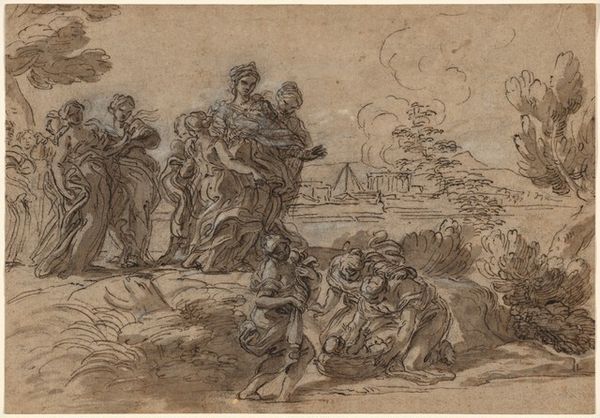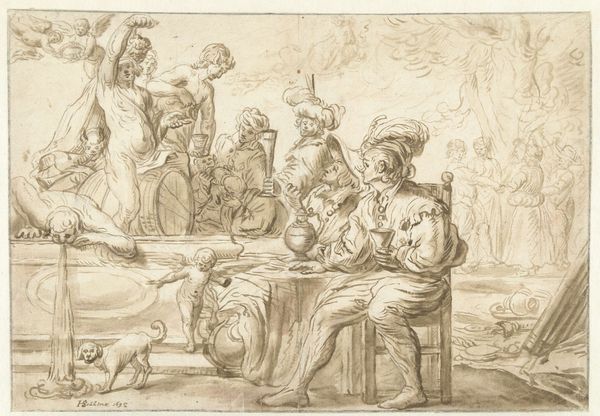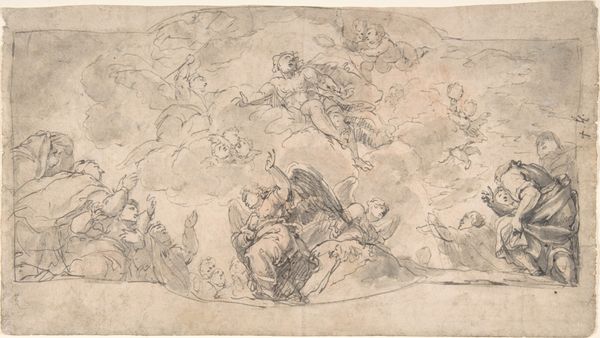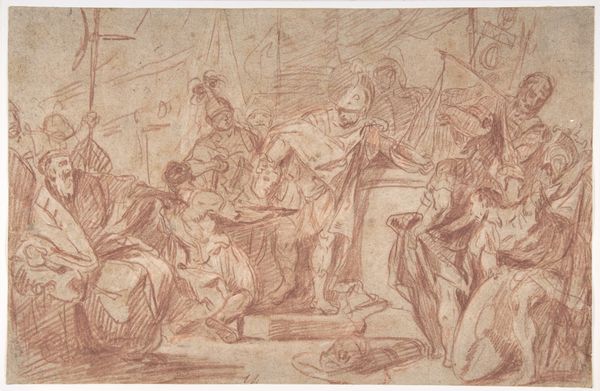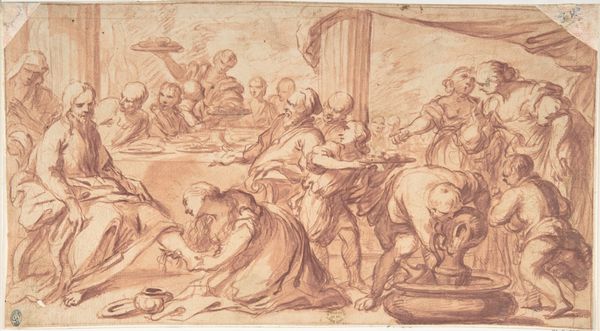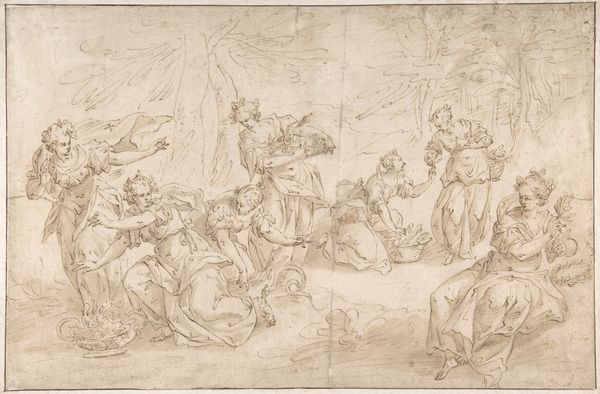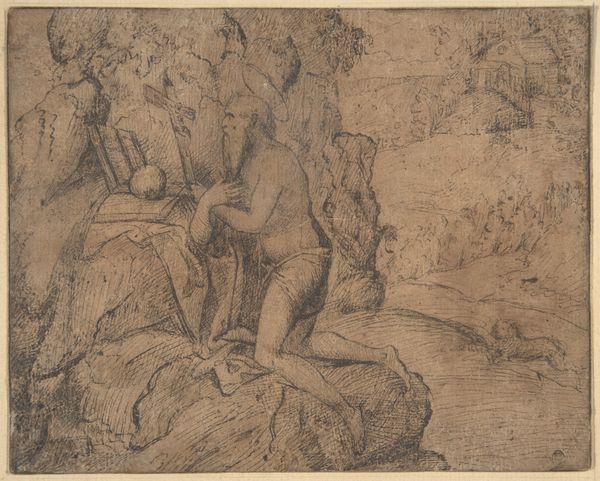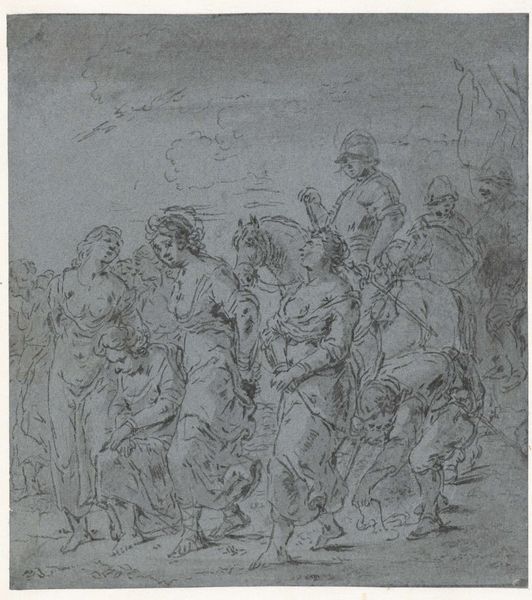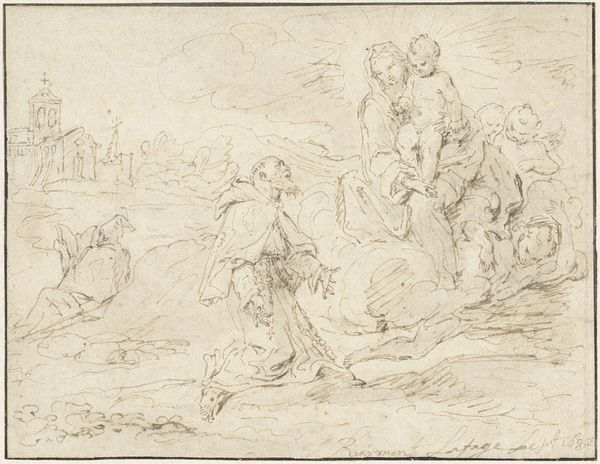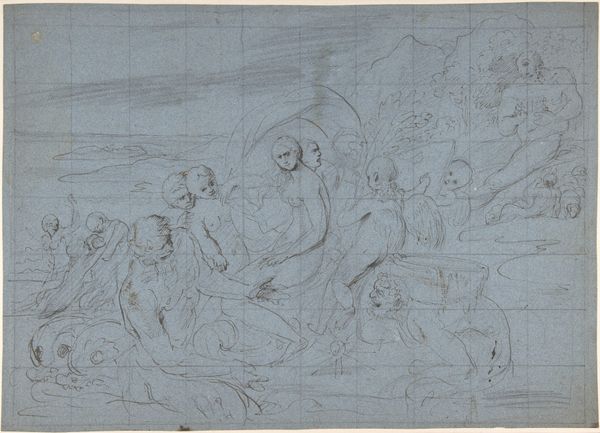
drawing, ink
#
drawing
#
figuration
#
ink
#
genre-painting
#
academic-art
#
italian-renaissance
Dimensions: height 190 mm, width 207 mm
Copyright: Rijks Museum: Open Domain
Editor: This drawing, "De Danaïden," by Ciro Ferri, dating between 1644 and 1689, rendered in ink, has a rather melancholic atmosphere. I’m struck by how the figures are arranged— almost like a frieze against the rough background. What are your thoughts when you view this piece? Curator: The linear precision and controlled tonality evident in this work immediately signal an exercise in academic draughtsmanship. Observe the recurring ovoid forms – the vases, the heads, the very negative space seems shaped by this form. How does this repetition contribute to the overall composition, do you think? Editor: I see what you mean; it definitely creates a sense of rhythm. Do you think that repetition also adds to the feeling of futility? It almost traps the viewer within the cyclical composition of these figures filling vases. Curator: Precisely! The Italian Renaissance aesthetic values harmony, order, and the idealization of form. Yet, the medium, ink on paper, reveals a subtle tension, an undercurrent of instability within the structured composition. It alludes to the conceptual significance the artwork wishes to explore through visual rhetoric. Editor: So, while on the surface it appears academic and ordered, the piece conveys a deeper, more unsettling narrative through its structure? Curator: Exactly. By carefully examining the relationship between the formal elements and their semiotic potential, we can arrive at a more profound understanding of the work's complex meaning. The artist skillfully conveys the allegory of eternal punishment with the cyclical arrangements of his forms. Editor: That's a very insightful way of looking at it. I appreciate you highlighting the importance of the form in conveying its thematic intent. Curator: And I commend your astute observations regarding the emotive potential inherent within seemingly structured compositions. It is in this dialogue between form and feeling that art truly speaks.
Comments
No comments
Be the first to comment and join the conversation on the ultimate creative platform.
